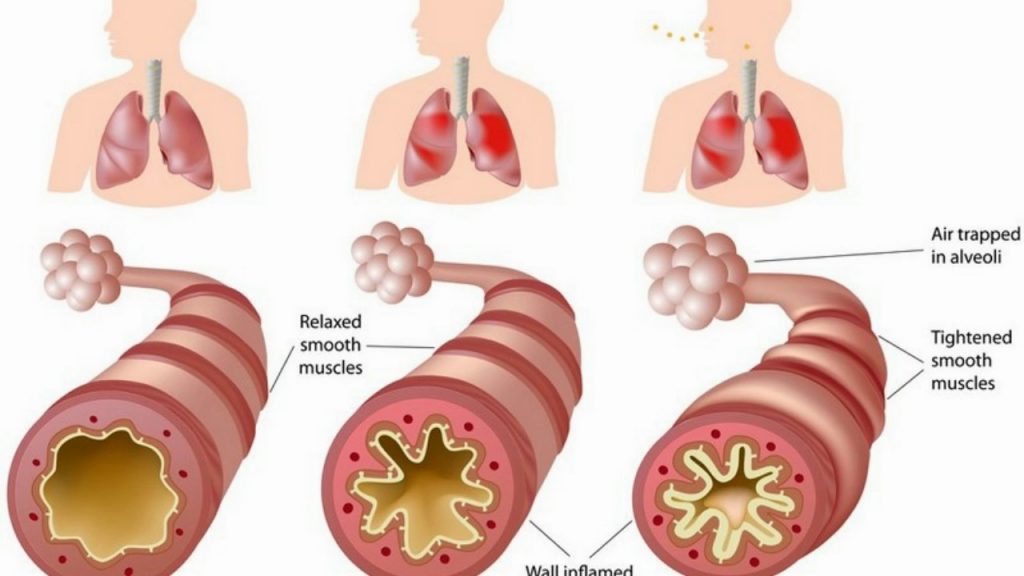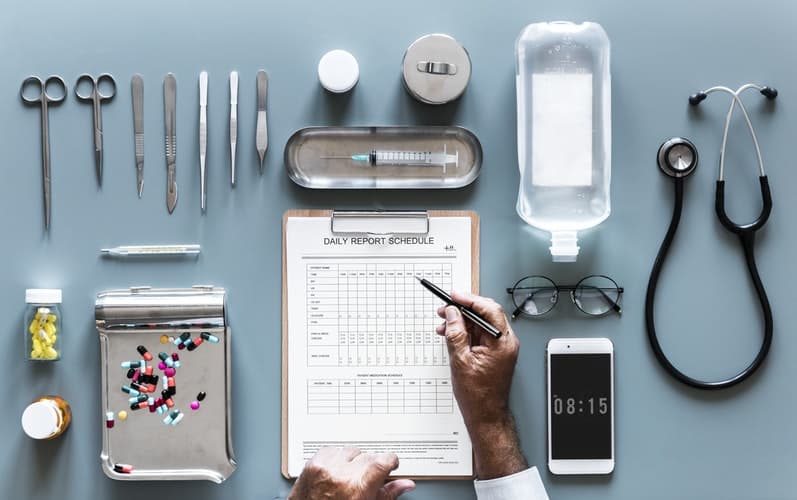What is Emphysema?
Emphysema refers to a progressive and a long-term lungs’ disease that mainly causes because of breathing shortness and due to over-inflation of air sacs (alveoli) present in lungs. In emphysema patients, tissues of lungs associated with the exchange of carbon dioxide and oxygen destroyed or become impaired. So medical practitioners have categorized the aforementioned lungs related problem under an obstructive type of lung disease. This is because; the disease results in slowing down or even stoppage of the airflow during the exhalation process.
How is emphysema diagnosed?
Whenever your family doctor or cardiologist suspects of emphysema disease based on patients’ complaints, he conducts a physical examination to undergo further analysis and provide treatment. Particularly, the doctor gives attention to physical appearance of his patient, his heart sounds and breathing sounds at the time of performing following tests:-
- Chest X-Ray
- Lungs Function Tests
- Blood Test to Judge Deficiency of Alpha-1-Antitrypsin
- WBC Count Test
- Test for Arterial Blood Gas
Chest X-Ray Test
Chest X-Ray allows your doctor to identify significant changes in lungs, which may indicate the problem of emphysema. Even more, this test may also identify any mass (tumor) or infection in your lung to explain specific symptoms.
Lungs Function Tests
Lungs function tests provide specific information to doctors about the mechanical function of lungs. In this test, the patient has to breathe within a tube connected to a monitoring system to record relevant information. Also, this test measures the amount of air hold by lungs and the speed, at which lungs expel air at the time of expiration.
Blood Test to Judge Deficiency of Alpha-1-Antitrypsin
If any patient has a family medical history about the deficiency of Alpha-1-Antitrypsin, the doctor would send blood test for evaluation of the corresponding genetic problem.
WBC Count Test
White Blood Corpuscles/Cells (WBC) count associated with blood test indicates an acute infection of the emphysema problem in patients. And, WBC count test may also evaluate various respiratory infections, like bronchitis and pneumonia, which make the condition of patients too much critical.
How to Treat Emphysema
Treatments of emphysema help in relieving many symptoms and slow down the progression of the problem, although it does not cure properly.
Medications for Emphysema Treatment
Initially, Pulmonologist doctors give the following medication courses to deal with the problem beforehand in COPD patients.
- Bronchodilators
Bronchodilators drugs to relieve breathing shortness, coughing and breathing problems via relaxation of constricted airways
- Inhaled Steroids
Inhaled steroids i.e. corticosteroid drugs inhaled in the form of aerosol sprays relieve breathing shortness, but its prolonged usage result in weakening of bones and risks to diabetes and cataracts.
Therapy
Therapies recommended by doctors are as follows:-
- Pulmonary rehabilitation teaches patients about specific breathing techniques and exercises, which would aim at the reduction of breathlessness and bring improvements in one’s physical exercise ability.
- A doctor may recommend for nutrition therapy, where you would get advice on proper nutrition.
- Patients facing the problem of severe emphysema with the low level of oxygen in their blood should use oxygen regularly to get relief at the time of doing physical exercises.
Surgery
Based on the complication of the disease, doctors suggest for two different types of surgeries, as mentioned here.
- Surgery to Reduce Lung Volume
In this process, surgeons remove various small wedges present in the damaged tissues of the lung. So this helps in expansion of remaining lung’s tissues and thereby, improvement in the breathing process.
- Lung Transplantation
Lung transplantation is the last possible treatment to deal with severe emphysema problem faced by patients.
Emphysema vs COPD
Is COPD the same as Emphysema?
COPD i.e. Chronic Obstructive Pulmonary Disease indicates an umbrella term constituting chronic bronchitis, emphysema and special types of bronchitis as well as asthma problem.
What is Difference between COPD and Emphysema
COPD
In the case of COPD, whenever a person inhales, air travels within tubes of lungs referred to as bronchial airways or tubes. These tubes usually split into large numbers of small pathways referred to as bronchioles, which end in groups of small air sacs or alveoli. Blood capillaries of human beings run from walls of these air sacs. Because of the damage of air sacs walls (inner and outer), old air fails to escape and traps within the lungs. Because of this, air sacs prevent entry of fresh air and thereby, compound the problem of entering oxygen within the human body.
Emphysema
In this case, the inner walls of air sacs suffer damages, become weak or even burst, which create a big space for holding air rather than small spaces in big numbers. In this way, the problem caused a reduction in the surface area across lungs and thereby, less amount of oxygen enters the bloodstream via capillaries.
Emphysema Symptoms
Doctors may identify the problem of emphysema in patients based on primary and secondary symbols, as mentioned here.
Primary Symptoms
These symptoms are prime markers of the problem, which patients come across at the very beginning stage.
- A cough consistently
- Breathing shortness or dyspnea that forces patients, as feeling unable to catch a breath
Secondary Symptoms
Doctors may identify these symptoms in patients when their problems reached to advanced lungs problems.
- Lung infections on the frequent basis
- Production of sputum or phlegm (mucus) in big amounts
- Wheezing
- Reduction in Appetite
- Fatigue
- Weight Loss
- Lips and fingernail beds, as turning to blue colour
- Sleeping disorders or sleep apnea
- Depression and anxiety
- Headache signals during morning time, while difficulty in inhale/exhale activity during nighttime (called as nocturnal hypoxemia or hypercapnia)
Emphysema Causes
Above all, smoking is the prime cause or major risk factor that leads to the problem of Emphysema among human beings. According to the analysis done by cardiologists and other healthcare professionals, cigarette smoking has resulted in 90 percent of COPD problems.
Along with this, other inhaled toxic substances, smoke obtained from the heating process and indoor cooking lead to the problem of lungs. Particularly, people located in developing countries suffer from this problem because of their consistent exposure to various poorly ventilated regions, while long-term exposure to dust, chemicals, air pollutants and other similar types of irritable components.
Emphysema Risk Factors
Now, let us look at the factors, which would increase the risk relates to the development of emphysema in patients.
Smoking
Emphysema usually develops in cigarette smokers, while pipe and cigar smokers are also susceptible to the problem. So, the risk associated with the problem would increase for all types of smokers based on the actual amount of tobacco present in the smoked product and actual numbers of years, they involved in smoking.
Age
Despite the damage in lungs in case of emphysema develops or grows in a gradual manner, many people dealing with tobacco-based emphysema start experiencing such symptoms in between the ages of 40 years and 60 years.
Secondhand Smoke Exposure
Secondhand smoke also referred as environment-based or passive type of tobacco smoke indicates the smoke that a person inhales inadvertently from the cigarette, cigar or pipe of some other individual. Because of the secondhand smoke, once the risk of trapping with the problem of emphysema increases largely.
Exposure to Dust or Fumes during Occupation
If a person breathes fumes from specific chemicals or from dust particles found in wood, cotton, grain or any mining product, you would likely develop emphysema. In addition, the risk increases if a person smokes.
Exposure to Pollutants
Irrespective of indoor pollutants, like heating of fuel or outdoor pollutants available in the form of car exhaustion, exposure to pollution would increase the risk associated with lungs problems or emphysema.
Emphysema Complications
Individuals suffering from emphysema would likely develop certain complications, as prescribed here.
Collapsed Lung Condition
Collapsed lung condition is life threatening among people, who suffered with the problem of severe emphysema. And this is because, lungs’ functions in such people compromise, which is serious for health.
Heart Problems
Emphysema would increase the arteries’ pressure in human beings, which remain connected with lungs and heart. This creates the condition of cor pulmonale, where a specific section of the patient’s heart becomes weak or expands.
Subcutaneous Emphysema
Spontaneous subcutaneous emphysema (SSE) is a very rare entity, Subcutaneous emphysema (SCE, SE) is when gas or air is in the layer under the skin. Subcutaneous refers to the tissue beneath the skin, and emphysema refers to trapped air. Wikipedia









